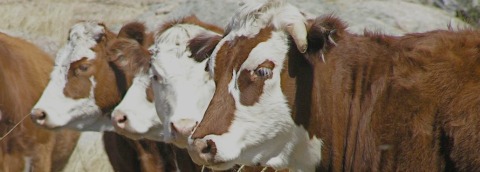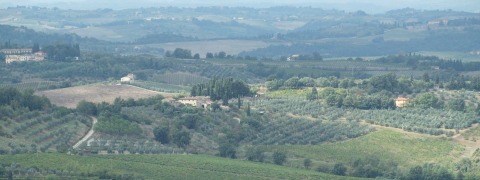Home | About CCW | Contact Us | Climate change Meaning | Causes | Solutions | Emissions | Carbon trading
Carbon farming
Carbon farming is supposed to be exactly what it seems — the growing of carbon. Just as we have sheep farming, and cotton farming, it is possible to grow carbon through biosequestration. Activities that encourage plant growth will pull carbon dioxide from the atmosphere into the vegetation and soils.
Global greenhouse gas and carbon emissions are assumed to be from the burning of fossil fuel, yet one fifth of anthropogenic emissions come from agriculture and land management.
This includes land clearing, biomass burning, loss of soil carbon on arable lands and methane from livestock production and amounts to emissions of 7,600 Mt CO2e annually.
Improvements to agricultural management can help reverse these emissions (abatement) and begin to sequester carbon in the landscape (mitigation).
More carbon friendly agricultural practices will also enhance production, ecosystem services, climate change adaptation capacity and improve conservation outcomes.
Data from The Garnaut Climate Change Review: Final Report (2008) suggests that in Australia alone there is the potential for improved agricultural management to sequester 354 Mt CO2e annually.
A farmer can change his management to produce a net accumulation of carbon on his property through a combination of
- reduced use of fossil fuels
- reduced use of fertilizers
- reducing methane emissions from livestock
- minimum or no-till tillage
- growing trees and vegetation
- reducing the time bare soil is exposed to the elements
- taking care with use of water
Each of these actions either reduces greenhouse gas emissions or sequesters carbon into the soil and vegetation.
Where these actions are
- more than business as usual, that is, they are additional
- result in some permanence to the accumulated carbon
- do not result in the production or practices shifting elsewhere, that is no leakage of emissions
Then the farmer can claim a carbon credit for each tCO2e that he has ‘farmed’.
No farmer would contemplate carbon farming unless he is sure of a financial return from the changes he will have to make to farm management. He will need to be able to sell the carbon just as he sells wool or wheat to both cover the cost of his altered management and make some profit.
This requires some form of emissions trading where the credits can be accounted and traded or an incentive scheme with direct payments for activities that will promote biosequestration or the accumulation of soil carbon.
The CFI
The Australian government has promoted carbon farming as part of its climate change policy. This domestic offsets scheme is called the Carbon Farming Initiative or CFI.
At the start of the scheme in 2012, Australian farmers can generate carbon credits (called ACCUs, Australian carbon credit units) from
- environmental plantings
- management of methane emissions from piggeries
- early season burning of savannas
This rather limited list of activities is expected to grow as the carbon accounting rules are agreed for other activities that are likely to include:
- reforestation
- reduced methane emissions from livestock
- soil carbon
Under the current rules only certain types of carbon farming generate compliance grade carbon credits
A compliance credit is accepted under the UNFCCC rules as a true reduction or sequestration of one tCO2e and can be used to acquit national greenhouse gas accounts that, in turn, report against emissions reduction commitments under the Kyoto protocol.
Needless to say that the CFI did not last. A change of government in 2013 came about in part on a pledge to repeal the carbon pricing and that included the replacement of the CFI with a new approach called 'Direct Action' — this uncertainty in policy has become a form of sovereign risk where uncertainty comes about from not knowing what the government will do next
Non-compliance credits from accounting soil carbon and management of re-vegetation are essentially voluntary because they cannot be used to offset a emission obligation. There is a market for voluntary credits but trades are small in volume and credit prices are lower.
The conundrum
Compliance grade credits are essential if carbon farming is to work in anything other than name.
Second class credits trade at a lower price, if at all, as demand come from voluntary purchases.
For example, I might buy these credits to offset a flight, or to say that my company or home is carbon neutral, but I do not have to do this. All I am buying is ‘feel good’.
When there are other financial pressures I could stop buying credits and there is no penalty.
This makes realizing the potential a huge challenge.
climate change wisdom › carbon emissions › carbon farming
Recent Articles
-
Reducing emissions while looking for solutions...
Nov 01, 15 04:46 PM
I've seen a lot of post's online for ideas on reducing emissions. The one suggestion I have not seen, is the most obvious. There should be a government -
Climate change evidence
Mar 24, 15 06:22 AM
Real climate change evidence has to demonstrate a change in climate. An extra sunny day or a severe storm or a flood is not enough. -
The climate change effect
Feb 19, 15 03:08 AM
What will be the climate change effect? There isn't one, there are many. Perhaps too many for us to understand.



New! Comments
Have your say about what you just read! Leave me a comment in the box below.